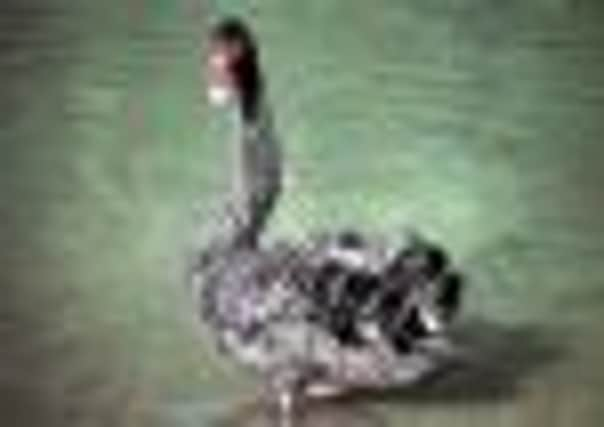Fifty black swans seenin Britain


Four thousand counters from Orkneys to Landsend turn out once a month on the same day and note what in every harbour, estuary, wet meadow, lake and pond throughout the land.
Nearly two million birds are counted in the peak time of mid-winter, when they are all milling around in Europe waiting for the frozen north to unfreeze so they can go back and breed again.
A total of 169 different species of water bird were seen.
Advertisement
Hide AdAdvertisement
Hide AdThese included five different species of swan, 34 different geese, 46 species of duck, and 43 species of wader. Somebody saw six ruddy shelduck and just two falcated duck, but there were more than a third of a million wigeon.
Just about the whole world population of pink-footed geese spent December 2007 in the UK, mainly on the Norfolk coast eating sugar beet tops.
To keep the black swans company (they are supposed to live in Australia but some have escaped from collections and seem to be thriving well here) there were twenty thousand mute swans.
I count 100 of these every month in Fishbourne Channel near Chichester Harbour.They are just one of the species seen in this harbour where up to fifty thousand birds spend their winter. Up to 20,000 are in Pagham Harbour every winter too.
Advertisement
Hide AdAdvertisement
Hide AdIt is good to learn that the UK hosted nearly half a million lapwings in January 2008.
These birds are declining rapidly over lowland farmland in England where two decades ago they were still quite successful with breeding numbers.
I would presume that with global warming breeding is more successful on farmland around the Baltic and Denmark – thus the birds do not have to venture as far as this country.
Up to 80,000 curlews were also seen in Britain, again most of which must have been hatched overseas in Eastern Europe.
Advertisement
Hide AdAdvertisement
Hide AdThis global increase in warmth is noticeable in other ways. Because of the warmer winters in Eastern England, some of the birds normally spending the winter in Sussex have recently not bothered to fly here but are content to spend the winter in East Anglia instead.
This explains why we have lost twenty thousand dunlin in the past 30 years. They now live in the Wash for the winter.
Among unusual wetland bird sightings in 2007/8 were two yellow-billed pintail, a sacred ibis, a night heron, and a lesser yellow-legs.
The top UK wetland is the Wash with a third of a million birds, followed by the Ribble, North Norfolk coast, and Morecombe Bay. Chichester Harbour holds the 27th largest number of birds; Pagham Harbour being 29th most important wetland.
Advertisement
Hide AdAdvertisement
Hide AdBoth sites hold internationally important collections of birds, these being brent geese, dunlin, black-tailed godwit, and in the case of Pagham, pintail duck.
The report gives a fascinating picture of the richness of the country’s wetland species and is published by British Trust for Ornithology, Wildfowl and Wetlands Trust, RSPB, and the Joint Nature Conservation Committee.
Richard Williamson